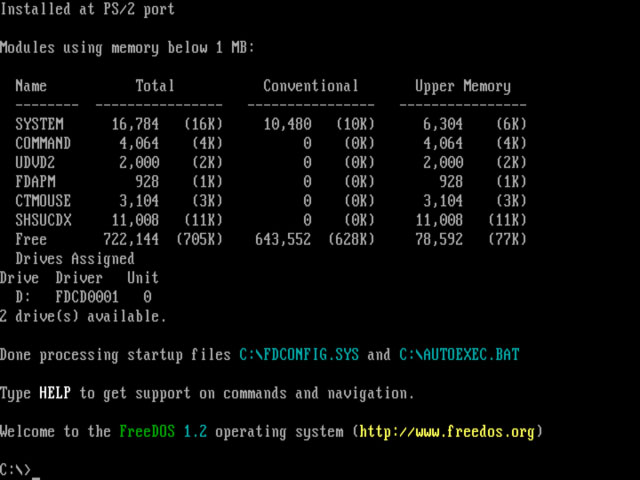FreeDOS 1.3 Arrives, First Major Update Since 2016
Key new features include a bootable live-image CD, and Zip (de)compression as standard.
Its not only Linux which can breathe life into an old machine. FreeDOS version 1.3 has been released after a quintet of release candidates, and five years since the last major version of this operating system (OS) was released. FreeDOS was designed to be an MS-DOS compatible OS, but based upon completely free and open source software, with the kernel under GPL v2. FreeDOS works systems dating back to the original IBM XT, through 286, 386, to modern hardware with expanded driver support where possible - so you can access devices like networks, CDs, USB etc. You might also like to install it in a virtual machine within your modern OS like Windows 10.
Key introductions to FreeDOS 1.3 include the new Kernel 2043, the use of the new FreeCOM 0.85a command shell, an 8086 version with FAT32 support, the return of networking, some new programs and games, and a multitude of package updates. Users are greeted with an improved CD initialization for the boot media and installed system, and the provision of the 375MB live-CD version of FreeDOS 1.3 (so you can use or try this OS and full suite of tools, apps, and games with even installing it). People who still use floppy disk based systems haven't been forgotten, with the floppy edition of FreeDOS 1.3 now with zip (de) compression built-in, which halves the number of install media (20MB download).
Perhaps you have read the introduction and are still scratching your head about when, where and how FreeDOS 1.3 could be useful or even entertaining. Some clues to its use are provided in one of the latest official videos, showcasing Release Candidate 5 (RC5) last December. In this video (embedded below) we see how the OS looks when installed, and the exploration of the full version's built in games like Pacman and Solitaire. In apps a useful and intuitive dual-pane file manager (DOS Navigator 2, DN2) is showcased, as are various code and text editors.
Though there is a great selection of games, apps, and utilities provided as standard, you can add many more (or remove some) using the provided FreeDOS Installer package editor.
One of the last things demonstrated in the video is the updated help system, and this uses the included AMB (HTML eBook Reader) software, provided as standard.

Asking around the office, the most common uses of OSes like FreeDOS 1.3 at Tom's Hardware are; in boot disks for getting systems out of trouble, for doing some hardware diagnostics on a system which arrived without an OS, as an OS on a very old system, for backup/cloning/preparing disks, for updating a BIOS, or just for having some retro DOS fun and games.
If you are interested in FreeDOS 1.3 head along to the download page where you can pick and choose ready-made downloads for various systems (legacy, UEFI) and various media (CD, USB, or even floppy disks). You can also compare what is included in the various downloadable versions of FreeDOS 1.3 to see what you will be grabbing. Installations weigh in starting at 20MB (plain, base) to 275MB including the developers' selections of apps, tools, and games.
Get Tom's Hardware's best news and in-depth reviews, straight to your inbox.

Mark Tyson is a news editor at Tom's Hardware. He enjoys covering the full breadth of PC tech; from business and semiconductor design to products approaching the edge of reason.
-
COLGeek Seems that a live Linux distro is more useful these days. Still, good to reminisce about the before (GUI) times.Reply
